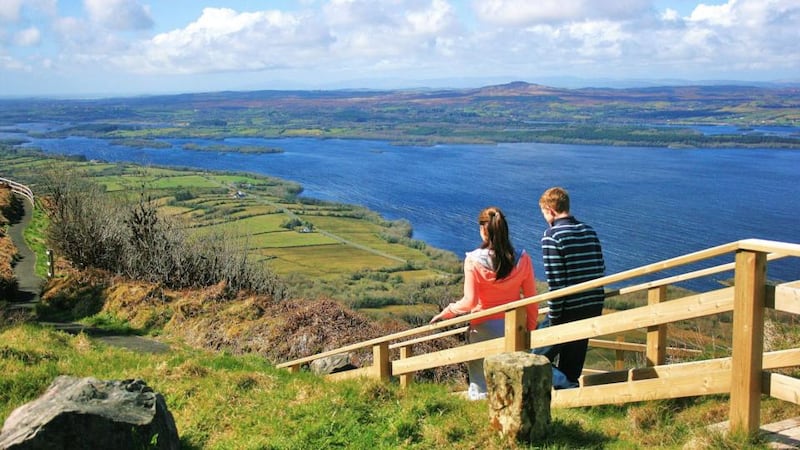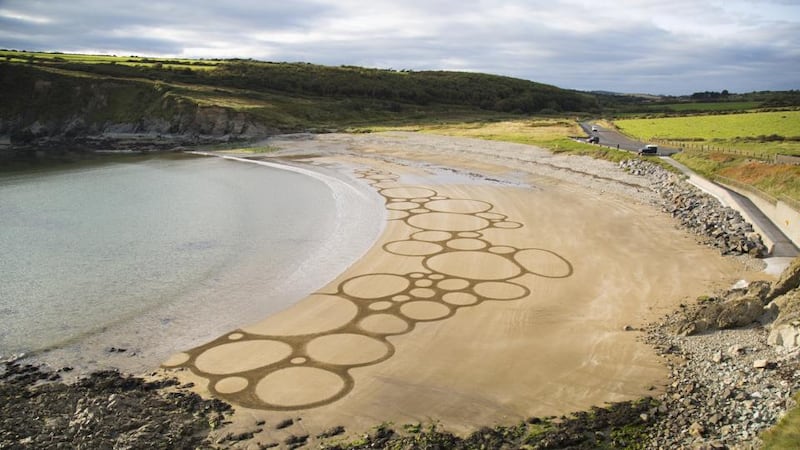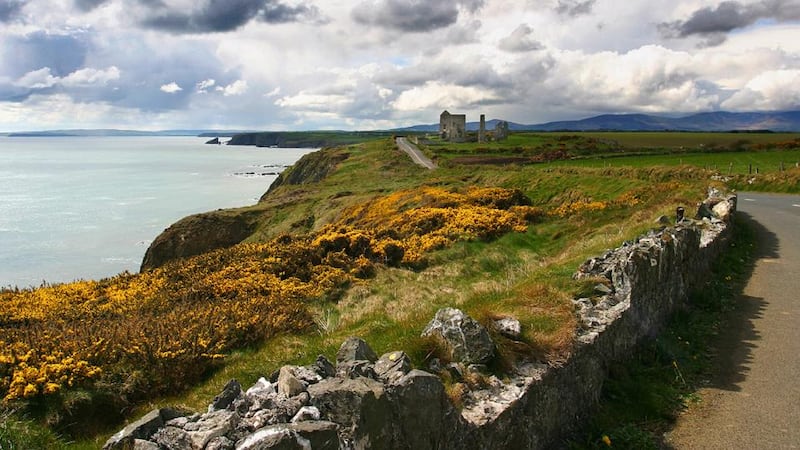We’ve heard a lot recently about seismic shifts in global politics but the original seismic activity of the Earth’s structures is also capturing the public imagination.
It might seem ironic that geological parks promoting knowledge of the oldest part of our history – the formation of the Earth – are the new kids on the block in terms of sustainable tourism. Speakers at the recent European Geoparks Network event in Co Clare pointed out, however, that exploring the rock formations of our planet has become a popular pursuit.
There are about 120 geoparks across the world , 69 in Europe and three on the island of Ireland. Loosely defined as natural landscapes with ancient rock formations, geoparks evolve differently in each location but all of them offer interpretation and exploration of the sequence of geological events that brought about their specific geographical features.
Ireland has three Unesco designated geoparks: the Copper Coast Geopark in Co Waterford, the Burren and Cliffs of Moher Geopark in Co Clare and the Marble Arch Caves across the Fermanagh/Cavan border
“The story of the Earth itself hadn’t been told before. People know about the biodiversity and culture of the landscape but geoparks tell us about the memory of the planet itself in a non-scientific way,” says Patrick McKeever, secretary of the international geosciences programme at Unesco.
Economic benefit
Geological Survey of Ireland director Koen Verbruggen says UK research has found that geoparks are bringing more economic benefit to regions than world heritage sites bring.
“Ireland has a great diverse geology and the geoparks are a great opportunity to link local sustainable tourism to geology. Farming and regional foods are dictated by soil and therefore by geology. Geoparks celebrate all of this,” he says.

The Geological Survey of Ireland and the local authorities co-fund geologists at geoparks in Ireland.
European Geoparks Network co-ordinator Nickolas Zouros points to the first International Symposium on the Conservation of Geological Heritage in 1991 as the starting point for European geoparks. At that event, delegates created the International Declaration of the Rights of the Memory of the Earth.
In November 2015, Unesco created new destinations around the world with the Unesco Global Geoparks branding. “It’s about celebrating and protecting the Earth’s 4,500-million-year-long heritage, sustaining local communities and looking at how the landscape has shaped the character of the people,” says McKeever.
This year the Unesco global geoparks are partners of the UN International Year of Sustainable Tourism. Creating employment in rural parts of the world and giving urban dwellers access to these landscapes are central to the work of European geoparks, according to Zouros.
As with other sustainable-tourism initiatives, the aim of the geoparks is to slow visitors down so that they have a genuine encounter with the natural environment. And, then, they hope visitors will stay a bit longer in local accommodation, spending money while there to help sustain rural communities across the world.
Irish geoparks
Ireland has three Unesco designated geoparks: the Copper Coast Geopark in Co Waterford, the Burren and Cliffs of Moher Geopark in Co Clare and the Marble Arch Caves across the Fermanagh/Cavan border.
Each has its own unique natural environment, interpreted by geologists and explored through educational and/or outdoor activities.

Take the Burren and Cliffs of Moher Geopark, for example. It reaches from the coastal western cliffs across to the Burren National Park, taking in areas of limestone, shale and sandstone/shale. Visitors are encouraged to explore on foot, by bicycle, by kayak or boat but crucially to “leave no trace”.
Carol Gleeson, manager of the geopark, says that asking visitors “to take nothing but memories” is a significant aspect of sustainable tourism.
Recent trends to tie ribbons on fairy trees near holy wells and to make replica piles of stones in the shape of dolmens and cairns are actively discouraged. “There is a disconnect between these activities by tourists and the original cultural expression in the landscape. There is also a danger that ribbons tied to trees will kill the trees, so it’s a form of environmental vandalism,” says Gleeson.
As part of its efforts to promote sustainable tourism, the geopark created the Burren ecotourism network. Rural businesses who sign up to the scheme must embrace a code of practice to genuinely embrace sustainable tourism measures.
“For example, we encourage people to use local guides, as these guides act as guardians of the landscape,” says Gleeson.
The Copper Coast Geopark has the distinction of being the world’s smallest geopark. “It’s 90sq km spread across seven villages with sea stacks, accessible old-fashioned beaches and a copper-mining history,” says John Galloway, one of the geopark’s directors.
He adds: “We use geology as a base for heritage – to explain why we are where we are and who we are. It has given a sense of identity to farms, B&Bs, beer and make-up businesses.”
That said, the volunteer-run organisation struggles to survive on limited funding and hopes the recently opened greenway from Waterford city to Dungarvan will encourage more national and regional funding to the project.

The Marble Arch Caves, originally in Co Fermanagh but now also crossing the border into Cavan, is the world’s only cross-border geopark. It encompasses 18,000 hectares of publicly accessible land with 300km of paths and trails.
Richard Watson, who manages the geopark, says it attracts about 400,000 people each year and brings £50 million (€59 million) to the local economy.
“We have boulder fields, sandstone cliffs, glacial remains and blanket bogs with prehistoric and early Christian sites right through to sites linked to Cromwell,” he says.
Watson is, however, concerned about how Brexit will impact on the cross-Border projects such as plans to resurrect smugglers’ routes as walking trails across the Cuilcagh mountains.









